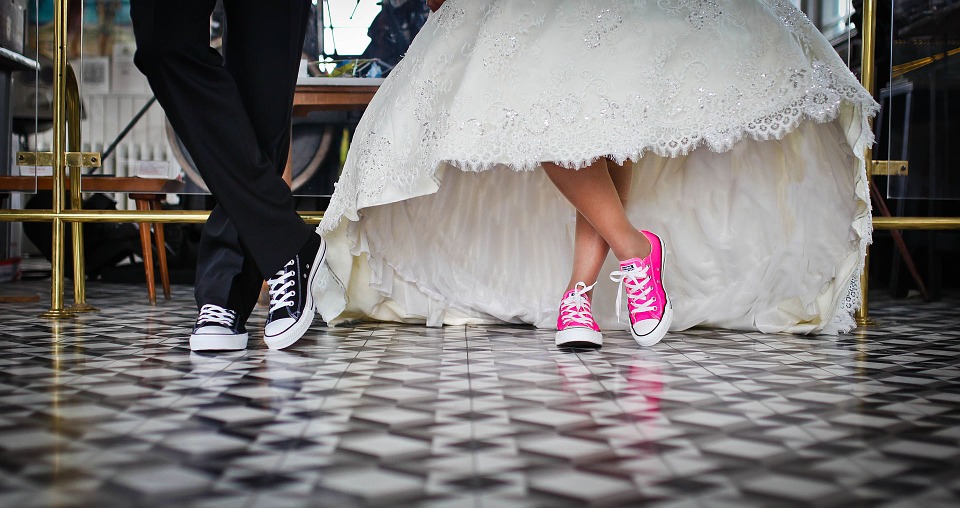Image credit: Seun Photography
Nigerians are highly cultural people and so are our events. The glamour, fun, and colourfulness which characterize Nigerian parties are better experienced than imagined. And as one of the three major tribes, the Yorubas aren’t left behind when it comes to organizing beautiful talk-of-the-town weddings. Yoruba wedding traditions are interesting as each step is carefully planned.
Like everyday culture, weddings in Yorubaland are full of folklore, color, fashion, and pageantry. However, being a tribe that cherishes organization and tradition, weddings in Yorubaland usually follow a series of events that sometimes span several weeks or even months. The events which usually begin with an informal introduction of both families end with a big traditional wedding.
The Introduction
The introduction takes place a few months before the engagement ceremony. This involves the meeting together of the families of the bride and groom in an informal setting. Usually, the groom’s delegation led by the father, the mother and the groom himself is accompanied by a few family members and friends to the house of the bride’s family. The occasion offers both families to know one another and is often held in a cordial atmosphere with little or no fanfare. At some point in the occasion, the groom is called out to prostrate to the family of the groom, while the bride is also unveiled to greet (by kneeling down) the family of her –to-be-family. After this, each member of both families is called out in order of their closeness to the marrying partners.
Apart from the major goal of getting to know one another, the families might also use the occasion to choose a date for the traditional marriage. However, such discussion does not necessarily have to take place during the introduction and might be done at a later date to be determined by the bride’s family. Another major highlight of the introduction is the offerings given by the groom’s entourage to the bride’s family. Typically, some tubers of yams and a few bottles of wine are offered.
The occasion ends with dining and winning, which is usually overseen by the hosting family (the groom’s family).
Invitations
After both families have agreed on a date, the couple-to-be comes up with an invitation card that appeals to both families. Usually, the invitation card carries such details as the date of the wedding, the venue, the time the event is expected to start, the name of the groom and bride, name of the invitee, RSVP, etc. The IV card may also carry information about the color code for the event. Unless otherwise stated, the family and friends of the groom are expected to put on a color code different from the bride’s.
Event Planning
The engagement can take place in an event center, a large hall or even an open field. Usually, the bride’s family picks a venue which both families decide on. The event planning, venue decoration, catering, partying, and others are handled by the event planner hired by the families. The event planner is expected to among other things, ensure that the decorations, and organization of the event aligns with the taste and culture of the wedding families.
Traditional Clothing
One of the best things about Yoruba people is their love for beautiful and classy attires. This is usually on parade at their weddings. The bride and the groom put on any Nigerian wax fabric that appeals to them. The attires must reflect the color code of their respective families, while also complementing one another.
The bride complements her outfit with a well-made head-tie (gele), gold chains, beads, bangles, gold earrings, and shoes. Her make-up artists also ensure they give her, her most-beautiful look possible.
The groom typically wears an aso-oke and complements it with craftily-made neck and hand beads.
The Ceremony
The engagement ceremony is officiated and coordinated by the master of ceremony (Alaga Ijoko). The Alaga Ijoko who happens to be a female could be a member of the bride’s family or a total stranger. The groom also comes with their own professional master of ceremony (Alaga iduro) who leads the groom’s family to request the hand of the bride in marriage from the bride’s family.
The ceremony kickstarts with the Alaga Ijoko introducing the groom and his friends to the bride’s family. After the formal introduction, the groom and his friends prostrate to the bride’s family and formally request their daughter’s hand in marriage.
The other highlight of the ceremony is the reading of the letter requesting for the bride’s hand in marriage by a young lady from the groom’s family. The bride’s family also responds with a letter of their own.
Another integral stage in the ceremony is the presentation of the items to the bride’s family by the groom’s family. Generally, these items include:
- A bag of sugar
- A bag of rice
- A bag of salt
- A keg of honey
- A Quran or Bible
- Alligator Pepper
- Bitter Kola
- Kolanut
- Forty or more tubers of yam
Typically, the preliminary stages are carried out in the absence of the bride. However, as soon as the groom and his family meets the requirements set by the bride’s family, the bride is brought into the hall, accompanied by her friends and bridesmaids. She is then introduced to the groom’s parents, who pray for her, and she is then taken to a seat specially prepared for her beside the groom. At this stage, they are officially declared husband and wife. The wife then feeds her husband some cake and wine, gives him a kiss. The new couple and the guests are then treated to entertainment by the live band or DJ.


